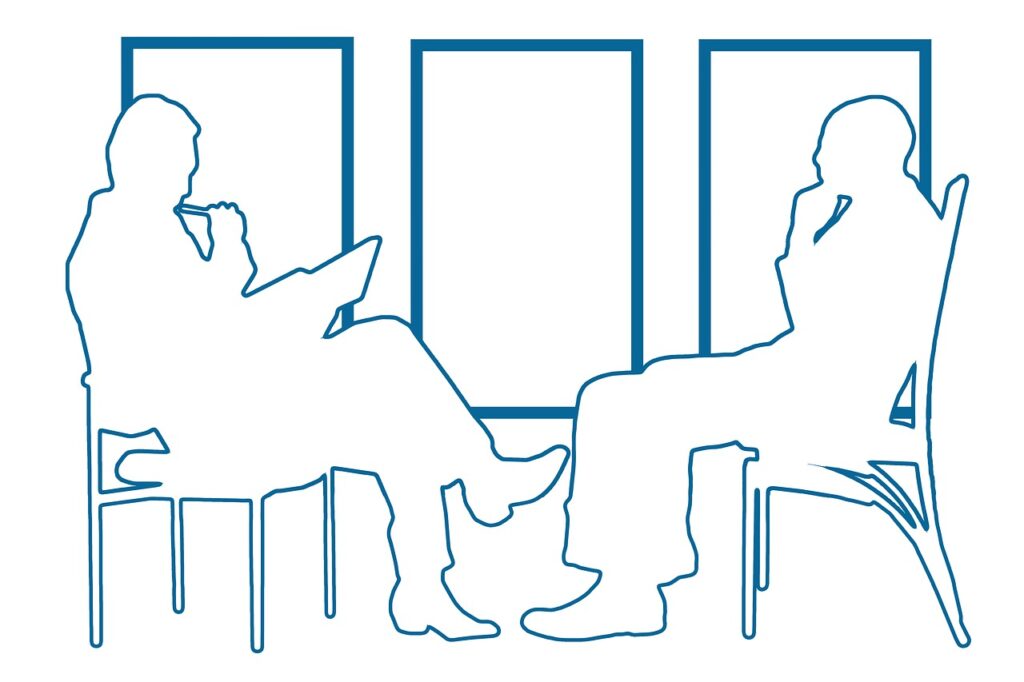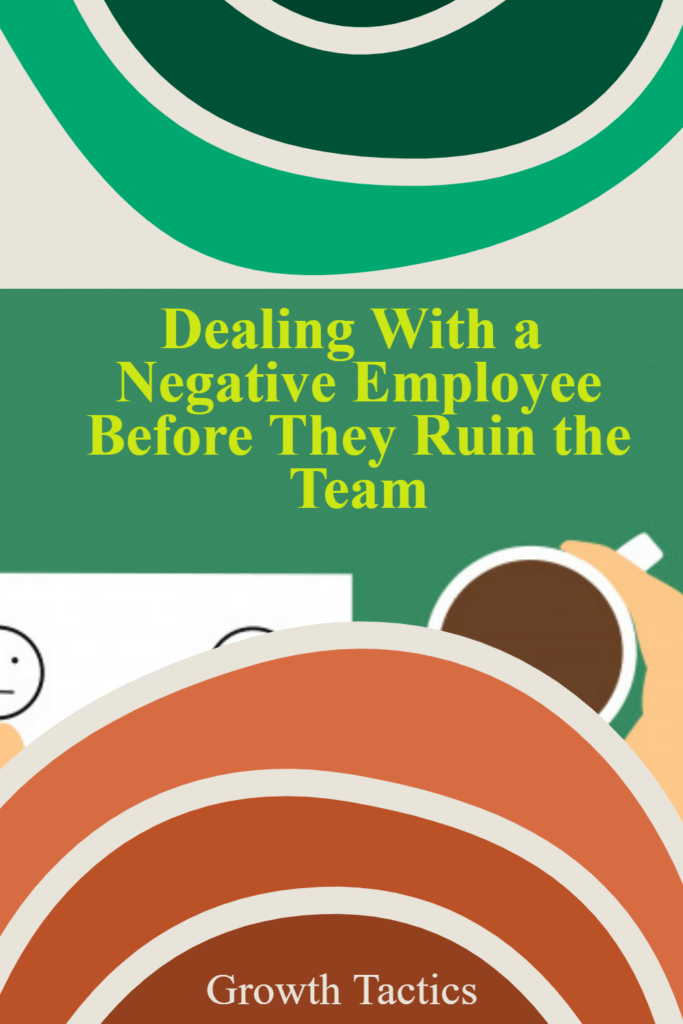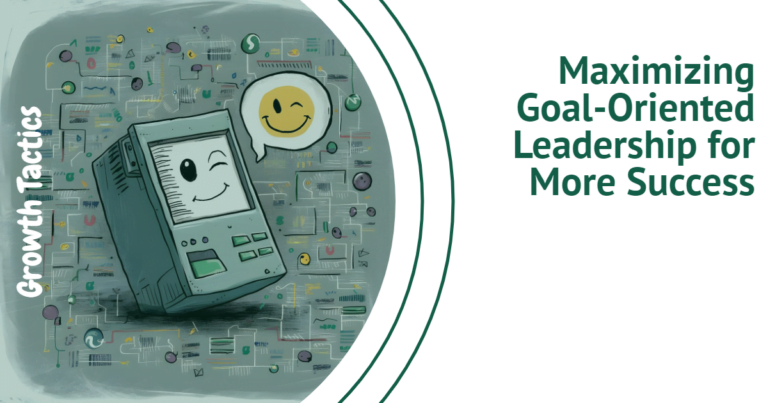One negative employee can have an outsized impact on a team’s morale and productivity. Their pessimistic attitude drains others and brings down the overall work environment. If left unaddressed, negativity spreads, and soon more team members start to dread coming into work. Complaints rise while motivation and performance decline.
That’s why it’s crucial for managers to promptly address any emerging negativity. Allowing it to fester will only make the situation worse. With constructive feedback and clear expectations, an employee’s poor attitude can often be turned around before it poisons the well. If not, difficult decisions may need to be made for the good of the team. Either way, dealing with a negative employee head-on protects the team and preserves a positive, productive work culture. This article explores how managers can best handle negative employees.
Jump To Section
Recognizing the Signs of a Negative Attitude

A negative attitude in the workplace can manifest in various ways. Some signs for managers to look out for include:
- Complaining and pessimism: The employee consistently voices complaints about their work, co-workers, company policies, etc. They frequently predict negative outcomes and focus on the worst aspects of any situation. The employee may spread their negativity to others.
- Blaming and hostility: The employee is quick to blame others when things go wrong, without taking any personal responsibility. They may act confrontational, argumentative, or rude to team members and leadership. The employee takes issues personally and overreacts.
- Refusing to collaborate: The employee avoids teamwork, isolates themselves, and doesn’t offer help to co-workers. They seem to dislike collaborating and prefer to work independently, even when tasks require group effort. The employee appears resentful of having to work with others.
Addressing Concerns Privately at First
When an employee’s negativity becomes apparent, it’s important for the manager to address it directly but privately at first. Schedule a one-on-one meeting with the employee to discuss your concerns. Make it a two-way conversation – listen to any grievances or frustrations they may have. Get specific recent examples of the negative behaviors you’ve observed, focusing on the actions and not attacking the employee’s character.
For example, say “You’ve been late to the past three team meetings, and when you arrived you audibly sighed and rolled your eyes as I was speaking. That behavior is disrespectful and disruptive.” Not “You’re a terrible employee with a bad attitude.”
Set clear expectations for how you need to see their behavior and attitude improve. State the exact changes that need to happen, and by when – such as no more public complaining or arriving late. Explain the impact their negativity has on you as a manager, the team, and the work environment. Conclude by expressing your confidence that they can meet these expectations if they commit to improving.
Providing Clear and Constructive Feedback
It’s important to provide clear and constructive feedback to the employee about their negative attitude. Give specific examples of behaviors that are problematic, such as consistently complaining during meetings or spreading rumors. Explain how these behaviors negatively impact the team and productivity. Remind the employee of company policies and expectations for conduct.
Feedback should be direct yet diplomatic. Avoid being overly critical or accusatory. Focus the conversation on observable behaviors, not the employee’s character. Ask the employee if there are challenges or issues affecting their work that you can help address. Offer training, coaching, or other resources as needed. Make it clear you want to support the employee in improving.
Document the feedback conversation in writing and have the employee acknowledge receiving the information. Set follow-up meetings to track progress. Be consistent in providing feedback to all team members. The goal is to preserve a positive environment where people feel motivated and productive.
Setting Goals and Timelines

Once you’ve had initial conversations with the negative employee and provided feedback, the next step is to collaboratively make a plan to improve their attitude. Set specific, measurable goals and deadlines for change. For example, “Improve interactions with teammates by being more positive in meetings over the next 2 weeks.” Or “Respond promptly to requests from the manager with a can-do attitude within the next month.”
Make the goals focused on observable behaviors, not subjective assessments. And make sure the employee has input so they feel invested in the plan. Agree on 2-3 initial goals and schedule follow-up meetings to track progress. Meet once a week or every other week as needed. The employee should demonstrate measurable improvement on the outlined goals by the deadlines you set together.
If they are not able to meet the goals, you may need to implement a formal performance improvement plan through HR. But starting small with defined goals and timeframes gives the employee achievable steps and incentives. Schedule regular check-ins to provide encouragement as well as constructive feedback on what they still need to work on.
Involving HR if Needed
If the negative behavior continues after initial feedback and meetings, it may be time to get Human Resources involved. HR can provide guidance on how to properly document and address ongoing performance or attitude issues. They will have insight into company policies and procedures that should be followed when dealing with a problematic employee.
Some key ways HR can help manage the situation:
- Have an HR representative present at more formal meetings with the employee. This shows the seriousness of the issue and that it is now an official company matter.
- Consult with HR on putting the employee on a performance improvement plan or other structured progress tracking. HR can assist with setting clear objectives, timelines, and consequences.
- Ensure proper protocols are followed if the negativity escalates to the point of needing disciplinary action. HR can advise if written warnings or suspensions are warranted.
- Get guidance from HR on when termination may be justified if behavior does not improve. They can assist with following termination policies and minimizing legal risks.
Having HR engaged demonstrates that addressing the negativity is now at the company level. Their expertise helps ensure policies are applied consistently across employees. HR involvement also protects both the manager and the organization.
Being Consistent with Other Employees
Managers must be sure to hold the negative employee to the same standards as all other employees. Company policies and expectations should be applied evenly to avoid any claims of unfair treatment or bias.
It is important that the manager documents all coaching sessions, performance evaluations, disciplinary actions, and other interactions with the problematic employee. These records show that the employee was treated the same as their peers. Documentation also provides evidence in case the negativity continues and further action like probation or termination becomes necessary.
The manager should remind the negative team members that they are expected to meet the same performance metrics, follow the same codes of conduct, and adhere to the same rules as every other worker. No exceptions or preferential treatment can be made, even if the employee makes excuses about their attitude. A lack of consistency will undermine the manager’s authority and breed resentment among other staff members.
By holding one challenging employee accountable to the same standards as all employees, the manager avoids playing favorites or enabling toxic behaviors. The documentation also protects the company if the worker tries to file a complaint of discrimination or unfair practices. Consistency in applying policies demonstrates the negativity is being addressed appropriately.
Preserving a Positive Environment
It’s important for managers to actively preserve a positive environment for the rest of the team when dealing with a negative employee. Some ways to do this include:
- Praise and encourage team members. Make sure to recognize the good work and attitudes of other employees. Let them know you notice their efforts and appreciate their positive impact on the team.
- Celebrate wins and progress. When the team achieves goals and milestones, take time to acknowledge it. Having a system of rewards or celebrations reinforces the desired culture.
- Keep focus on goals. Don’t let one negative person dominate too much time and attention. Redirect the team’s efforts towards shared objectives and desired outcomes. Remind everyone of priorities and keep moving forward productively.
- Model optimism and enthusiasm. As a leader, your attitude also impacts the environment. Maintain motivation and don’t get pulled into negative thinking.
- Limit venting. While empathizing with frustrations, don’t let them take over team discussions. Table the complaints and keep communication professional and solution-focused.
With deliberate effort, you can sustain a collaborative culture of mutual support and positivity despite one person’s bad attitude. Make it clear through your actions what behavior is expected and celebrated.
When to Consider Letting Someone Go

After multiple attempts to improve an employee’s attitude and performance through feedback and goal-setting, there may come a point where letting them go needs to be considered. This is a last resort, but can be necessary in certain situations:
- After multiple attempts to improve attitude: If an employee has been given clear feedback about their negativity multiple times, as well as opportunities to improve, but continues to bring down the team, it may be time to part ways. Continued coaching is not beneficial if the employee refuses to change their attitude.
- Refusal to meet expectations: If an employee will not or cannot meet the basic expectations of their role, despite encouragement and chances to improve, termination may need to be considered. This includes things like refusing to collaborate with team members, missing deadlines, or violating company policies.
- Very negative impact on the team: If one employee’s constant negativity is damaging team morale, productivity, or work quality, then letting them go may be the only way to preserve a positive environment. Their presence is doing more harm than good at that point.
The key is having documentation showing consistent issues and multiple good-faith efforts to address them before considering termination. It should never be done lightly or as a first resort. However, once it becomes clear one employee is unwilling to improve and is undermining the team, removal may be the best path forward.
Conclusion: Benefits of Handling Negativity
Addressing negativity and poor attitudes in a constructive manner has many benefits for both employees and the company overall. When managers provide clear expectations, feedback, and goals for improvement, it gives employees an opportunity to correct and contribute more positively. Handling issues promptly also prevents negativity from spreading and impacting the engagement, satisfaction, and productivity of the wider team.
While termination may occasionally be necessary, putting in effort to communicate concerns and give employees a chance to improve is the ideal first step. This preserves company culture by showing that all employees will be treated fairly, while also giving them room to grow. Promoting open communication, offering resources, and holding all team members accountable to standards of professionalism creates a more supportive environment. With the right balance of compassion and clarity, managers can deal with negative attitudes in a way that improves morale, productivity, and employee retention over the long term.








